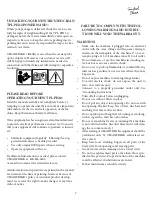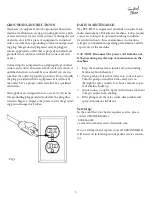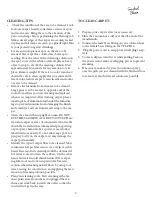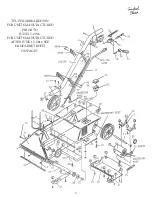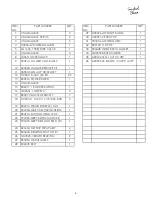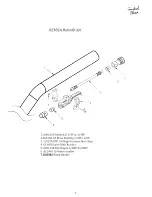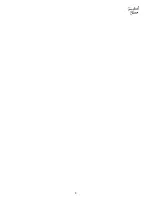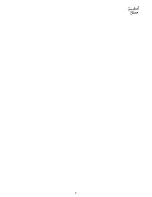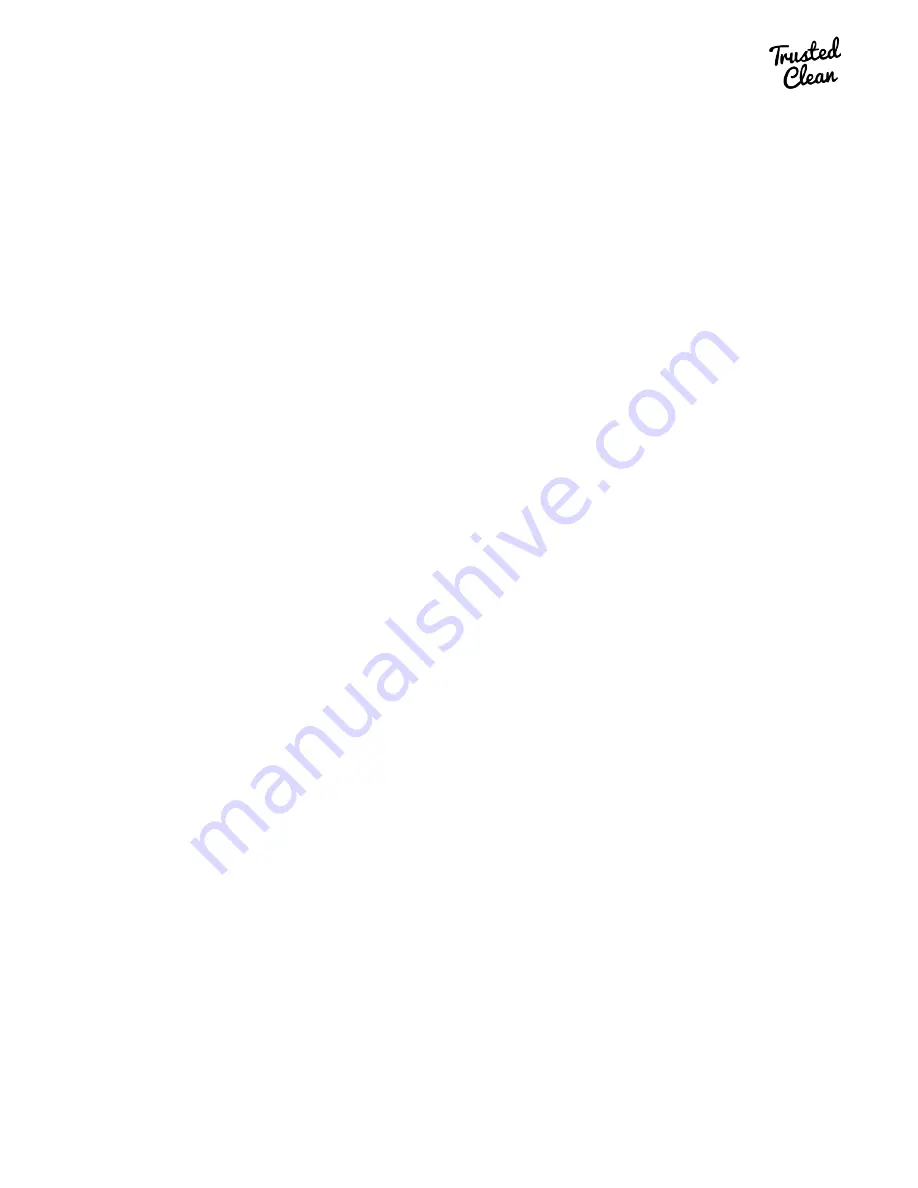
CLEANING TIPS
•
Check the condition of the area to be cleaned. Look
for loose carpet, heavily soiled areas, stains or spots
and worn areas. Bring these to the attention of the
person in charge before performing the cleaning job.
Make sure all edges of the carpet are securely tacked
in place and all seams are sewn ( or glued) tight. This
is your protection against shrinkage.
• Locate an inconspicuous spot on the area to be
cleaned. Test carpet for colorfastness before pro-
ceeding. Pour the concentrated cleaning solution on
the spot, cover with a white towel and place a heavy
object on top to absorb the cleaning solution. Wait
approximately 10 minuets for any reaction to take
place. Remove weight. If there is no color transfer, it
should be safe to clean. Apply this procedure if dif-
ferent color-texture carpet is seen in adjacent rooms
or areas to be cleaned.
• Remove the furniture from the area to be cleaned.
Large pieces can be moved to opposite end of the
room from where you start cleaning and replaced
when it is completed. After cleaning carpet, place a
small square of aluminum foil under the furniture
legs to prevent moisture from damaging the finish
and avoid dye and rust from transferring to the car-
pet.
• Clean the area with an upright vacuum. DO NOT
USE THIS MACHINE AS A DRY VACUUM! Heav-
ily soiled carpet or areas of concentrated foot traffic
should be treated with recommended pre-spotting
or pre-spray chemicals. If a spotter is used, follow
label directions exactly. Do not allow any spotter or
prespray to dry on the carpet as it may damage the
carpet permanently.
• Identify the type of carpet fiber to be cleaned. Most
commercial carpet fibers in use are acrylic or nylon
based. Best results in cleaning would be obtained if
hot water is used to clean these fibers. On the other
hand, hot water would shrink natural fiber carpet-
ing, like wool and cotton in particular. Exercise
caution when cleaning natural fibers by using cool
water, testing for colorfastness and applying the least
amount of cleaning solution possible.
• Plan your cleaning route. Start cleaning at the far-
thest point away from where you plugged the ma-
chine and work back towards the outlet so that the
cord will not get in the way.
TO CLEAN CARPET:
1. Prepare your carpet extractor as necessary.
2. Slide the vacuum hose cuff over the tube end of the
wand handle.
3. Connect the male brass fitting on your solution hose
to the female brass fitting on the TPL-PH12.
4. Plug the power cord to an approved wall plug recep-
tacle.
5. To clean, depress wand lever while pulling back on
the power wand. make overlapping passes to prevent
streaking.
6. If necessary, make a dry pass (no solution spray)
over the path you just cleaned with the brush still on,
to remove as much dirt and solution as possible.
4


